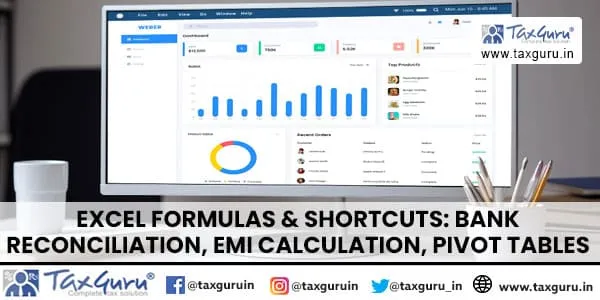Unlock the secrets of a successful M&A deal! From finding capable advisors to navigating the emotional roller coaster, grasp the keys to M&A triumph. Explore crucial steps like compiling target lists, contacting targets, and conducting due diligence. Learn how to write a purchase agreement, close the deal, and handle post-closing adjustments. Delve into the art of integrating acquisitions by managing product mix, optimizing operations, and making personnel decisions. Elevate your understanding of M&A processes for a seamless journey from initiation to integration.
Mergers and acquisitions hold significant importance for businesses, making it crucial to ensure the success of these transactions. To achieve a seamless journey from initiation to completion and integration, it is essential to grasp the factors contributing to M&A triumph.

Keys to Successfully Completing an M&A Deal
An M&A deal represents a monumental milestone for your business, underscoring the importance of a successful transaction. By familiarising yourself with crucial M&A insights, regardless of whether you are pursuing a merger or acquisition, you significantly enhance your chances of successfully concluding the deal. The path to success unveils the following indispensable secrets:
Retain capable and experienced M&A advisors
You can’t complete this transaction alone, and a business owner who represents himself in a life altering deal is asking for trouble. You need a dispassionate advisor who has been through the process before and can guide you to a close. This advice is especially true if you’re selling a business.
Keep yourself from getting too high or too low during the process
M&A is a roller coaster ride, with ups and downs around every turn as a deal you think is wrapped up one day falls apart the next day . . . only to come back together on the third day. Maintaining a steady and balanced approach is essential.
Check emotion at the door
Despite the frustrations of M&A, you need to keep your emotions in check. Yelling and screaming doesn’t get the deal done. Logic, facts, and a cool demeanour do.
Take your time with the first offer
Ideally, you want multiple offers before deciding which deal to accept. Having options increases your chances of getting a great deal.
Don’t hold out for a marginally better offer
Take it if you want to do a deal, and the offer is sufficient. Part of something is better than all of nothing, which may be what you get if you wait around for the perfect deal that never comes.
Know when your position is weak or strong
Exaggerating a position of strength can deter potentially favourable deals while mishandling a position of weakness can jeopardise the deal and potentially harm your professional trajectory.
The market is the best way to determine your company’s valuation
In other words, business appraisal services have limited value. Get out in the market and have actual conversations with actual Buyers.
Steps of the M&A Process
Going through an M&A deal can be an intimidating process (for both the mergers and acquisitions teams), but that process thankfully follows some concrete steps. Here’s the stepbystep process that nearly every M&A deal follows:
You can only buy or sell a business if you have a list of suitable Sellers or Buyers.
Making a phone call and discussing the target’s interest is essential. That discussion lets you gauge the target’s interest level and whether proceeding makes sense. Knowing how to make a pitch is an art; believe it or not, being a Buyer is far more difficult than being a Seller!
The teaser (sometimes called an executive summary) is the document Seller sends to the Buyer to give Buyer just enough information (the product, the customers, the problem the company solves, and some highlevel financials) to make the Buyer want to learn more. The teaser is usually anonymous;; the Buyer doesn’t know which specific company is sending the document.
Both sides agree to keep the deal discussions and materials confidential.
The CIM or deal book is the Seller’s bible. It provides all the information (including company history, product descriptions, financials, customer info, and more) Buyer needs to determine whether to make an offer.
Buyer expresses interest in doing a deal by submitting this simply written offer, often with a valuation range rather than a specific price.
Buyer and Seller get a chance to meet face to face. In these meetings, Seller provides Buyers with an update on the business and guidance for future performance. Additionally, both sides gauge how compatible they are.
Based on the material in the CIM and the updates from the management meetings, the Buyer submits this detailed offer with a firm price.
In the due diligence phase, Buyer examines Seller’s books and records to confirm everything Seller has claimed.
Buyer and Seller memorialise the deal in this legally binding contract.
Closing is rather anticlimactic: Both sides sign lots of papers, the Buyer gives Seller the money, and Seller gives Buyer the company.
Closing isn’t the end of the deal. Buyers and Sellers usually have some post closing financial adjustments. The buyer has to integrate the acquired company into the parent company or ensure it can continue operating as a standalone business.
How to Integrate an Acquisition
After successfully acquiring a company, you must integrate it into your operations. Integrating acquisitions can be challenging;; successful integration involves merging several aspects of the companies. Some considerations for successfully combining an acquired company with a parent company include the following:
Product mix:
As integration approaches, the Buyer effectively manages the product and service offerings of the acquired and parent companies. Different acquirers adopt different approaches in this regard. Some prefer to maintain the existing product mix. Otherwise, s may make adjustments, such as discontinuing certain products. These decisions are typically driven by factors such as customer overlap, low quality, low sales volume, or the misalignment of the product with the Buyer’s overall vision for the combined entities.
Operations:
Cost savings in operations are a significant driving force behind making acquisitions. By acquiring a company, the Buyer can achieve various forms of cost optimisation. These measures contribute to maximising cost efficiencies and overall operational effectiveness.
Personnel:
The Buyer faces challenging decisions regarding the personnel within the acquired company. These decisions encompass determining whether to retain the existing management team or introduce their team to oversee the acquired company’s operations. The Buyer can save costs by eliminating redundant positions from consolidating both entities. They can optimise efficiency and ensure smooth integration of the acquired company into their existing framework.
Personnel decisions are sensitive issues, so handle them with compassion.






















